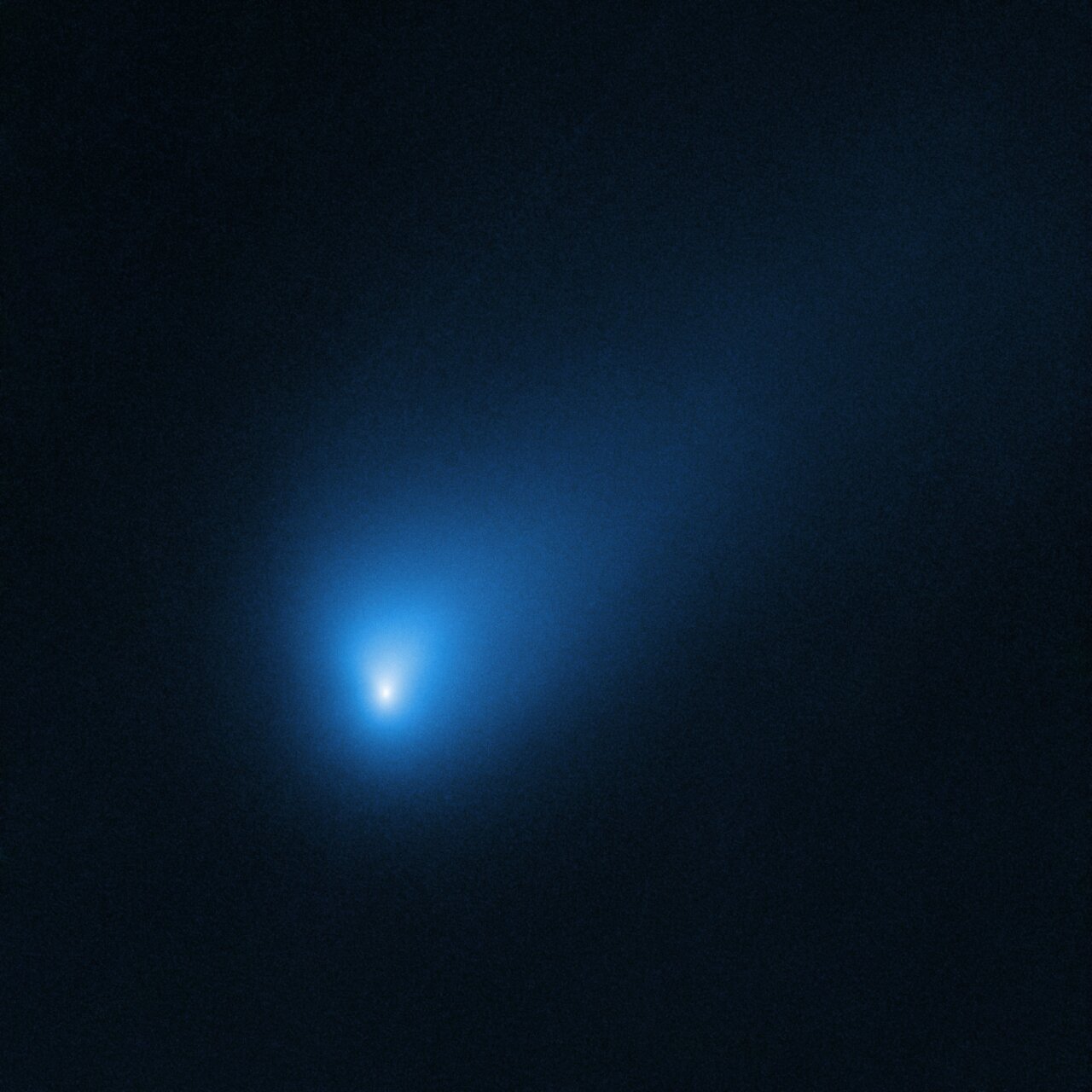
Hubble has captured an image of a comet that is believed to have traveled to our solar system from a different planetary system somewhere else in the galaxy. The comet, named 2I/Borisov, was first spotted in August by an amateur astronomer named Gennady Borisov and was subsequently imaged by astronomers from the Institute for Astrophysics of the Canaries. There has even been some preliminary analysis performed on the comet, suggesting that the gases it is giving off include cyanogen gas, which is a combination of carbon and nitrogen.
Now it has been imaged by the Hubble Space Telescope, creating the clearest picture yet of this extraterrestrial visitor. In the Hubble image, you can see the solid core of ice that forms the heart of the comet, surrounded by a halo of concentrated dust. This has given astronomers a better view of the comet and allowed them to compare it to a previous object which visited from outside the solar system, ‘Oumuamua. And it has raised more questions about how and why the two objects are so different in terms of composition.
“Whereas ‘Oumuamua looked like bare rock, Borisov is really active, more like a normal comet,” David Jewitt of UCLA, leader of the Hubble team who observed the comet, said in a statement. “It’s a puzzle why these two are so different.”
Hubble was able to capture the comet from a distance of 420 million kilometers (260 million miles) from Earth, though astronomers should have more chances to see the object even closer up in the coming months. The comet is traveling toward the Sun at a ripping speed of 150,000 kilometers per hour (93,000 mph), and it will make its closest approach on December 7. At this point, it will be at a distance of just 2 AU (astronomical units, or the distance between the Earth and the Sun) from the center of the solar system.
This will provide an opportunity for closer study of this object which is surprisingly similar to objects from nearer to us. “Because another star system could be quite different from our own, the comet could have experienced significant changes during its long interstellar journey,” Amaya Moro-Martin of the Space Telescope Science Institute said in the same statement. “Yet its properties are very similar to those of the Solar System’s building blocks, and this is very remarkable.”
Editors' Recommendations
- Our galactic companion, the Small Magellanic Cloud, sparkles in Hubble image
- Go on a ‘Grand Tour’ of the outer solar system with these Hubble images
- See the closest-ever image of comet NEOWISE captured by Hubble
- See our solar system’s newest spectacle, comet NEOWISE, in glorious detail
- Solar Orbiter to make serendipitous pass through the tail of a comet



